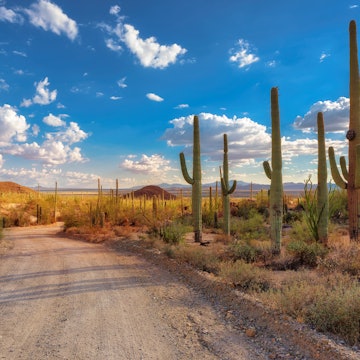

Route 66 is the quintessential American road trip. WildSnap/Shutterstock
In a country mad for the open road, Route 66 is the quintessential American road trip. Indelibly dubbed the “Mother Road” by great American novelist John Steinbeck, this very long string of small-town main streets and country byways first connected Chicago and its big ambitions with the waving palm trees of Los Angeles and the blue Pacific in 1926.
Once an escape to a better life, today it offers a nostalgic escape to the past, a window to natural beauty and wide-open spaces, an introduction to character-packed small towns…and some really good pie.
The mere idea that you can set off on a 2400-mile journey and encounter a constant stream of surprises, natural beauty, creativity and idiosyncrasy is a delight and even a source of wonder in today’s world. For you never know just what you’ll find around the next bend: a beloved old diner, a curio shop run with heart or a vista so magnificent it takes your breath away.
You can expect to feel some emotion, too – anyone driving this road can’t help but feel a connection to the legions of travelers during Route 66’s heyday from the 1930s to the 1960s, when it offered a route of hopes and dreams. The route reveals the complexity of American history, from the Trail of Tears to segregation. After all, its beloved "Mother Road" moniker comes from Steinbeck’s The Grapes of Wrath, a novel about class, poverty, the Dust Bowl and the cross-country journey itself.
Read on for a full guide about where, when and how to get the most out of this most iconic of road trips.
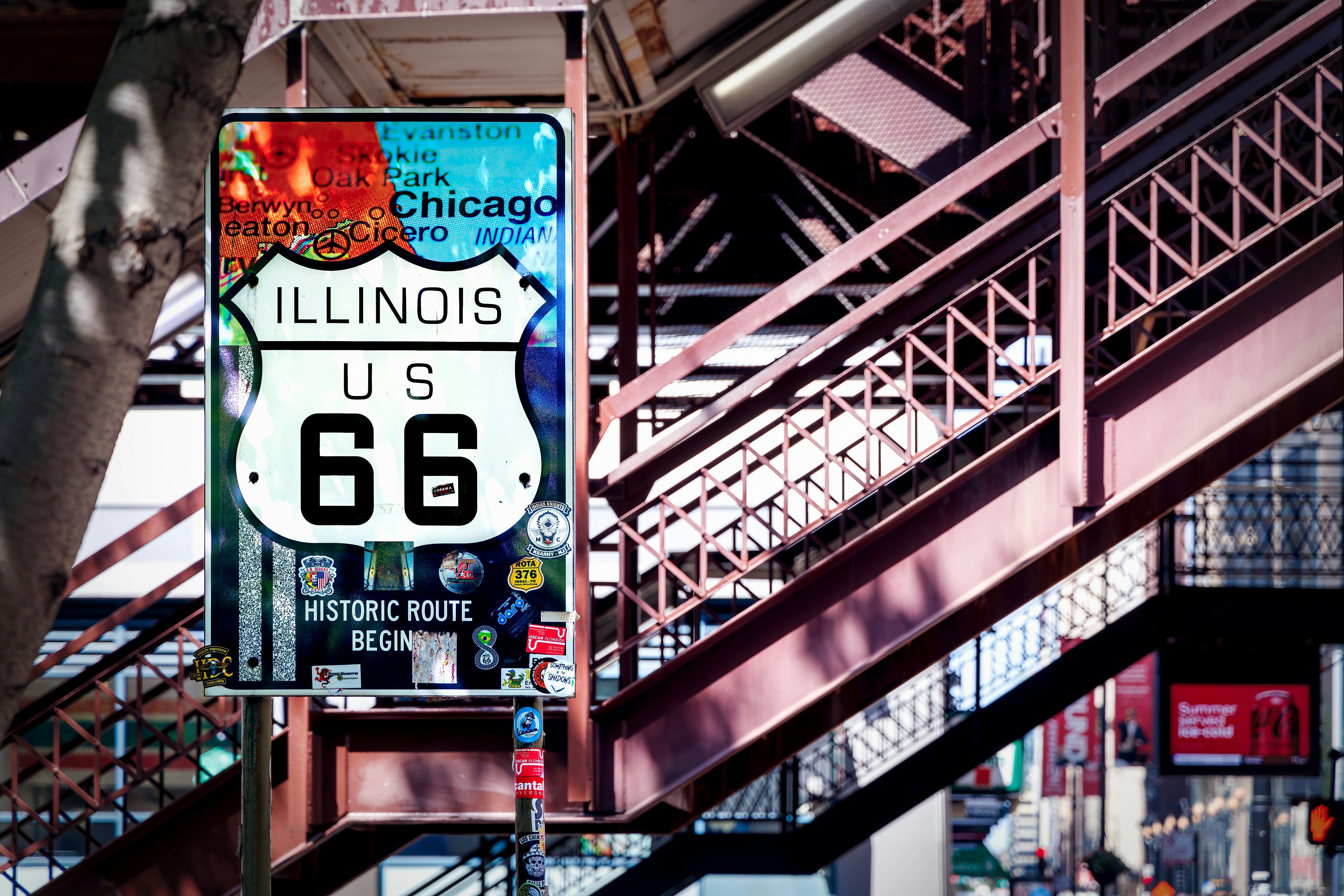
Where to start: Chicago
The drive begins in the clamor of Chicago’s Loop, within its skyscraper-packed downtown and not far from Lake Michigan. One of the busiest airline hubs in the world, the Windy City is easy to reach from just about anywhere, with huge rental-car operations at both O’Hare and Midway Airports.
Just an hour or two after you’ve left the city, you’ll find yourself in a different world. One where fields of crops provide texture and the only water you see may be a meandering stream. Following old roads that were once Route 66, wander from one small town to the next, relishing their surprises. The Illinois prairie draws you ever further – and it’s further that you want to go.
An alternative: Heading west is by far the most popular way to tackle Route 66, both for historical reasons and because the glittering Pacific as end-of-trip reward is a true delight. Some, however, choose to follow the lead of old-time truckers bringing loads east from the Port of Los Angeles, with Chicago's bright lights as the finale.
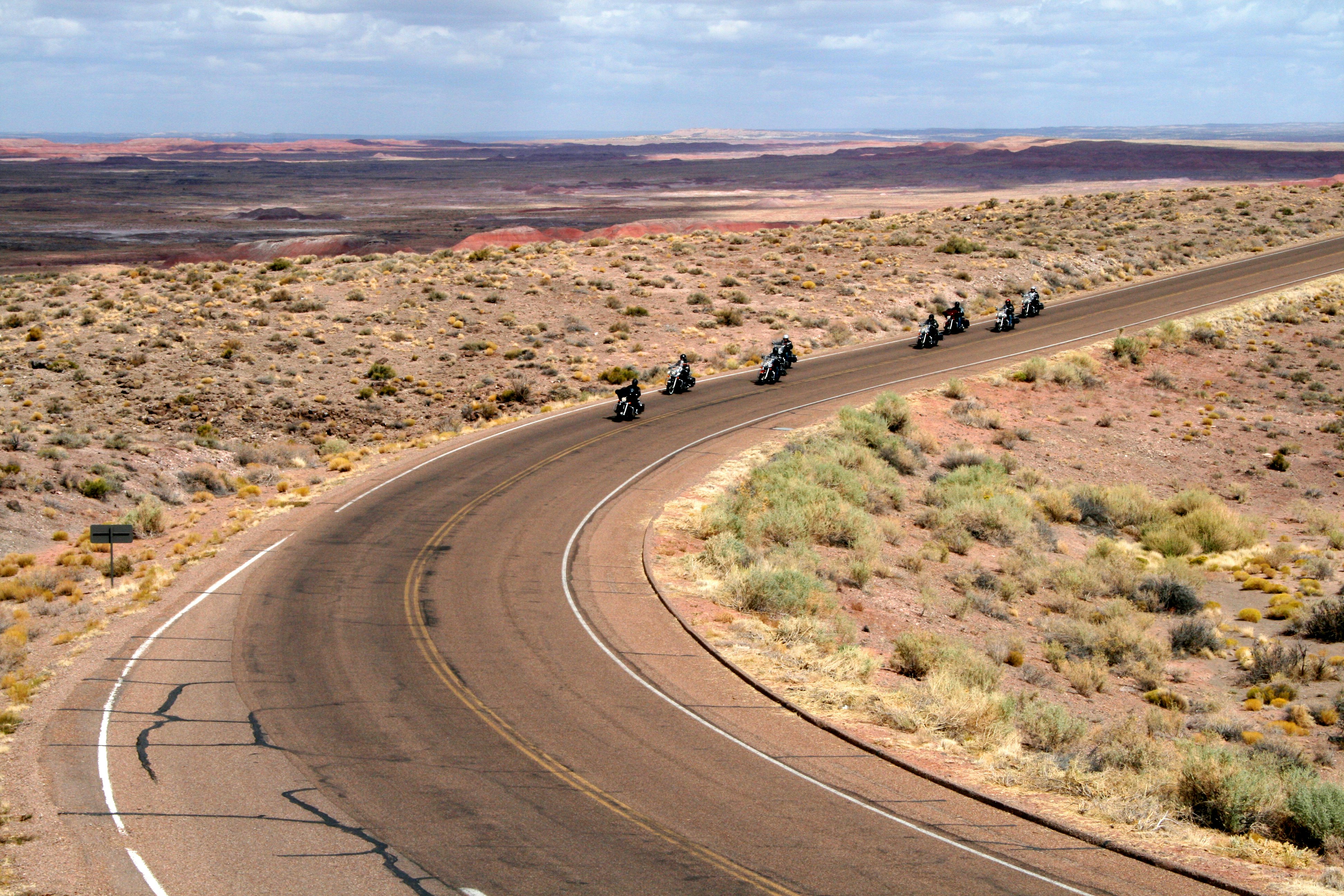
The best time to drive Route 66
Spring is a lovely time to set out on the road. Beginning in April, most everything is open, temperatures are mild and the wildflowers are in bloom.
Summer is peak season along Route 66. Book nights at coveted motels in advance and prepare for crowds at popular sights. Balmy nights mean sitting outside under the stars. Daytime temperatures in the deserts can be dangerous.
Autumn colors pop in the Midwest, and the hills and mountains further west glow in the sun. Much is open through October; don’t worry about booking ahead except on weekends. In winter, days are short, and snow can coat the road nearly anywhere but the California coast.
Top things to do on your Route 66 itinerary


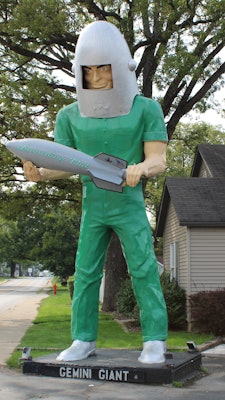

1. Take in a world of weird, wonderful, only–in–the USA kitsch
Back when businesses lived or died by their own moxie, Route 66 was a breeding ground for wild ideas to lure in the passing public. Supersized signage, one-of-a-kind accommodations and attractions that range from whimsical to just plain weird can be found across Route 66. These are a few of our favorites.
An hour outside of Chicago in Wilmington, Illinois, the Gemini Giant – a 28ft fiberglass spaceman – stands guard outside a now-closed diner. The sizable, green-rocket-holding statue lives on as a terrific photo op. Another beloved Route 66 icon, the Blue Whale of Catoosa, Oklahoma, has been delighting travelers since 1972. Stop to take a walk through the whale’s gaping mouth and out onto a pier; the entire site is rustic, dusty and a hoot.
An urban highlight is a meander through the heart of Oklahoma City’s Uptown neighborhood, where we recommend getting out of your car and setting out for a stroll. While the store closed long ago, the Milk Bottle Grocery is still topped by an enormous bottle of milk that lures travelers.
Celebrating the humble material that made modern ranching possible, the Devil’s Rope Museum & Route 66 Museum in dusty McLean, Texas, has vast displays of barbed-wire that are surprisingly intricate (and a source of inspiration for hipsters’ tattoo patterns), as well as a small but homey and idiosyncratic room devoted to Route 66. And Holbrook, Arizona, offers a piece of Southwestern kitsch you can sleep in: the 1950 Wigwam Motel, each room is a self-contained concrete tepee outfitted with restored 1950s hickory log-pole furniture.



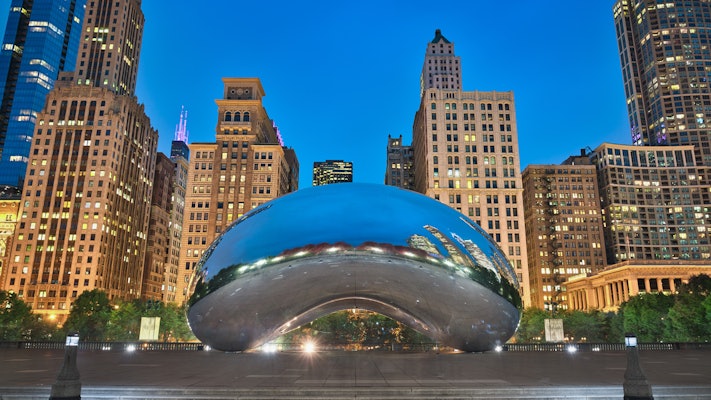
2. Get inspired by soaring architecture and brilliant folk art
Other manmade attractions along the route are more elevated – soaring, even. Chicago's Millennium Park bursts with free and arty sights. The mega draw is Cloud Gate – aka the Bean – Anish Kapoor’s 110-ton, mirror-smooth sculpture. Walk right up to it, ponder the skyline reflection and snap a picture. Over the state line in Missouri, the Gateway Arch is an icon of St Louis – and of the USA. Now the centerpiece of its own national park, the silvery, shimmering arch, designed by Finnish-American architect Eero Saarinen, stands 630ft high and symbolizes St Louis’ historical role as “Gateway to the West.”
While less grand, other spots along Route 66 reveal the brilliant creativity the itinerary can inspire. Exhibit A: the Cadillac Ranch in Amarillo, Texas. A salute to the spirit of the American road, the installation was created in 1974 by burying, hood first, 10 west-facing Cadillacs. The accepted practice is to draw on what’s left of the disintegrating cars, which gives them an ever-changing patina. (Bring spray paint in case others haven’t left any around.)
Folk artists have also left their mark along the highway. The vertical, richly decorated constructions at Totem Pole Park reveal folk artist Ed Galloway’s interpretation of Native American motifs; the largest of them rises 90ft high. And in New Mexico, the Tinkertown Museum has hand-carved dioramas of towns and other scenes by artist Ross Ward, as well as antique toys and other eye-catching objects.
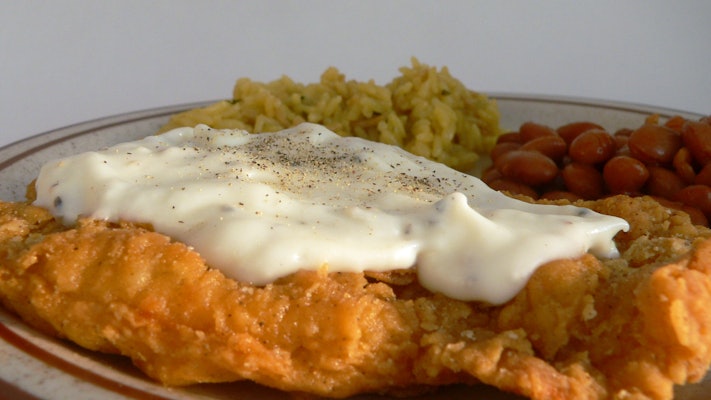


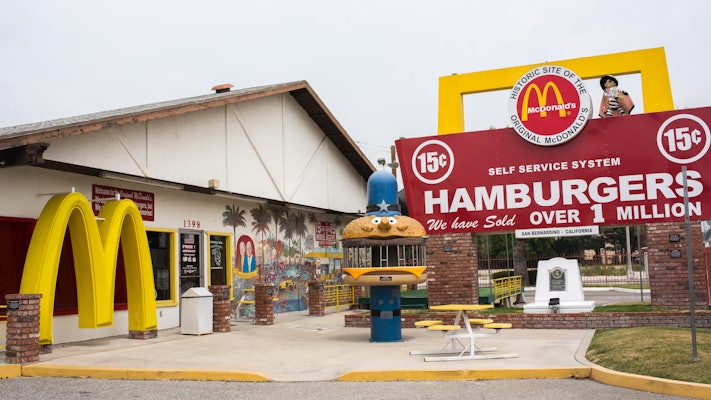
3. Eat your heart out (just don’t tell your cardiologist)
Even on remote stretches of Route 66, you won’t be too far from an eye-catching diner with heaping (and artery-busting) plates of comfort fare. In Stroud, Oklahoma, the Rock Cafe (built from local stone to protect it from frequent tornadoes) is one of the best. The food is mostly Southern, with a German flair; a specialty is the Jägersnitzel, a breaded pork cutlet topped with a creamy bacon and mushroom sauce served with späetzle.
Four miles west of Galena, Kansas, stop at the red-brick Old Riverton Store and stock up on top-notch sandwiches and Route 66 memorabilia. In Albuquerque, New Mexico, chrome and glass bricks turn the 66 Diner into a beacon of Streamline Moderne styling.
And while you can’t get a burger there these days, no culinary tour of Route 66 would be complete without a stop in San Bernardino, California, at the site where Dick and Mac McDonald first went into business, back in 1937. Today, the original McDonald’s is a museum full of collectibles, from old restaurant ashtrays to vintage Happy Meal toys.
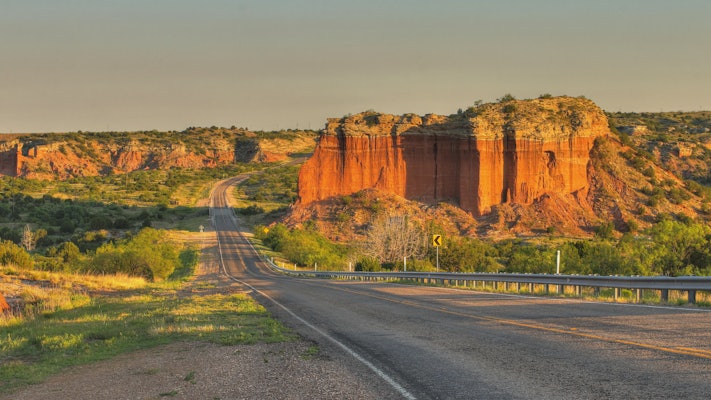
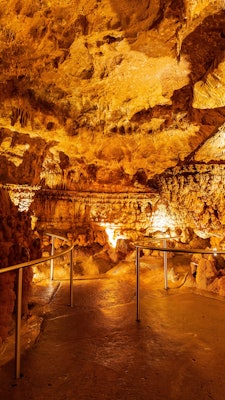


4. See the natural wonders of the American Southwest
While Route 66’s manmade attractions surprise and delight, it’s the natural beauty along this route that might make the most indelible memories. Stanton’s Meramec Caverns in Missouri combine the marketing nous associated with the Mother Road with extraordinary geological formations. Privately operated since 1933, the caves here drip with stalactites and stalagmites; families swarm the dramatically lit underground spaces, lured by aggressive, multimedia ads (watch for a painted barn near Milepost 235 going west on I-44).
In Texas, 20 miles off Route 66 in Conway, Palo Duro Canyon State Park encompasses a vast and colorful cleft in the earth that’s ideal for hiking and other active pursuits. Second in size in the USA only to the Grand Canyon, Palo Duro Canyon reveals cliffs striated in yellows, reds and oranges; rock towers; and other geologic oddities – a refreshing delight after days on the road.
A natural highlight of the route is Arizona’s Petrified Forest National Park, where the vast Painted Desert is strewn with fossilized logs (or “trees”) that predate the dinosaurs. Fragmented, fossilized and strangely beautiful, the logs form quite a sight against the desert's panoply of colors, which swirl and blend like a kaleidoscope.
5 itineraries for a Route 66 road trip
A big difference between Route 66 travelers today and those back in the day is time. Mother Road denizens once took to this highway to get somewhere quickly – but now the trip itself is the destination, and there are many ways to do it. Here are five suggested itineraries.
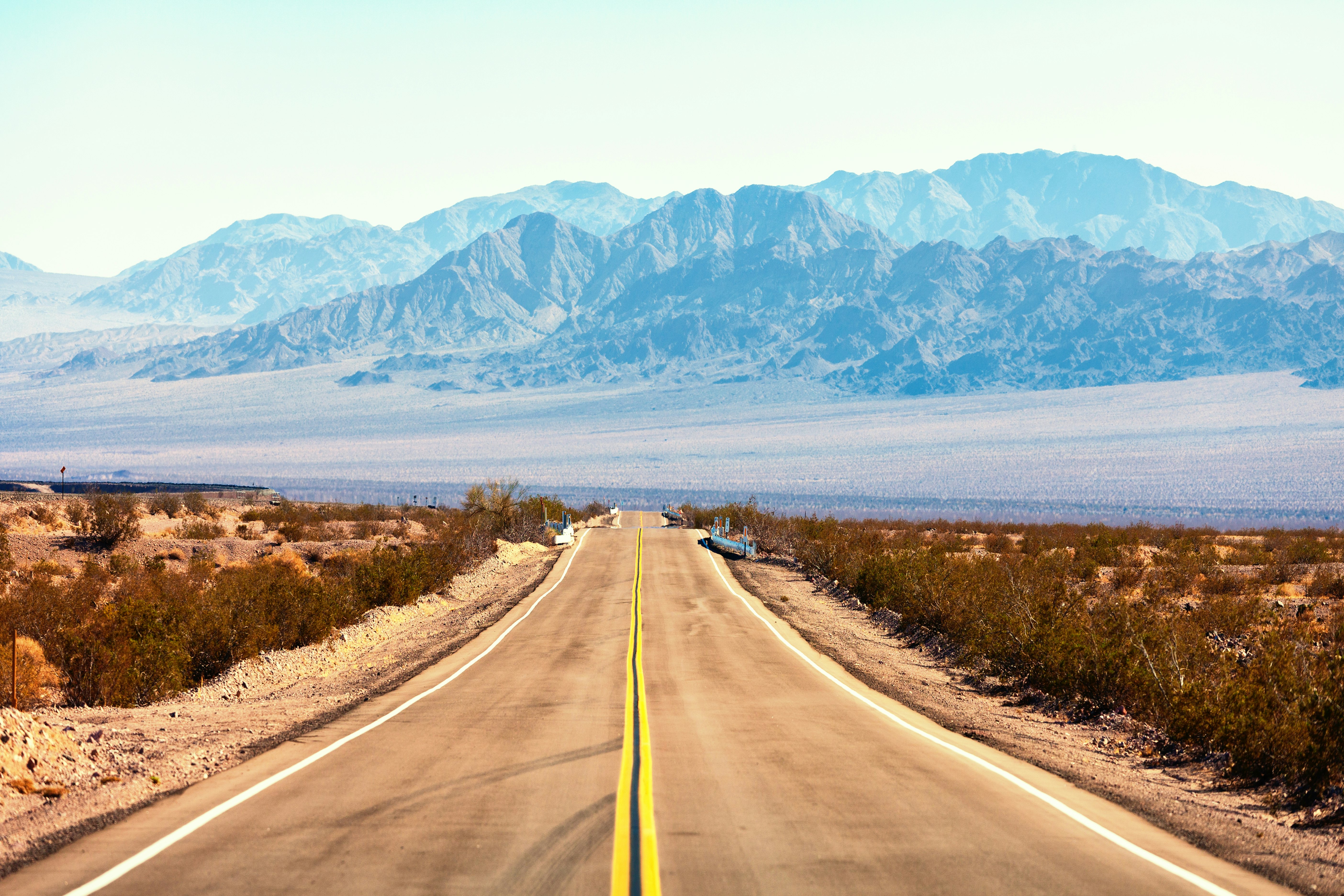
1. Long and languid
Best for: The full experience
Time: 14 days
Driving Route 66 at your leisure is the dream of every Mother Road adventurer. Taking two weeks to cover the 2400 miles means you can find a seat and have an extra piece of pie in an iconic diner, spend time reveling in the view when you grab a selfie and stay an extra night at any place that touches your soul. You need only cover about 170 miles a day – not even four hours of driving.
2. In a hurry
Best for: Those with less than a week
Time: 6 days
Those challenged for time can still have a meaningful drive along Route 66. In six days, you’ll need to cover 450 miles a day, which will keep you in the car a lot (thank goodness the scenery is so epic), but still allows for targeted stops and experiences. Keep in mind that in winter, you’ll be driving at night. Any fewer days and you might as well hop on the interstate and hit the gas.
3. Mix and match
Best for: Targeted enjoyment
Time: 7 days
There’s usually an interstate not far from Route 66. If pressed for time, you can hop on the freeway, hit the speed limit and make tracks in between slower-paced stints on the undivided highway. Keep to all stretches of the original road that stray far from the interstate, including from Springfield to Joplin, Missouri; all of Kansas; and from Seligman to Topock, Arizona.
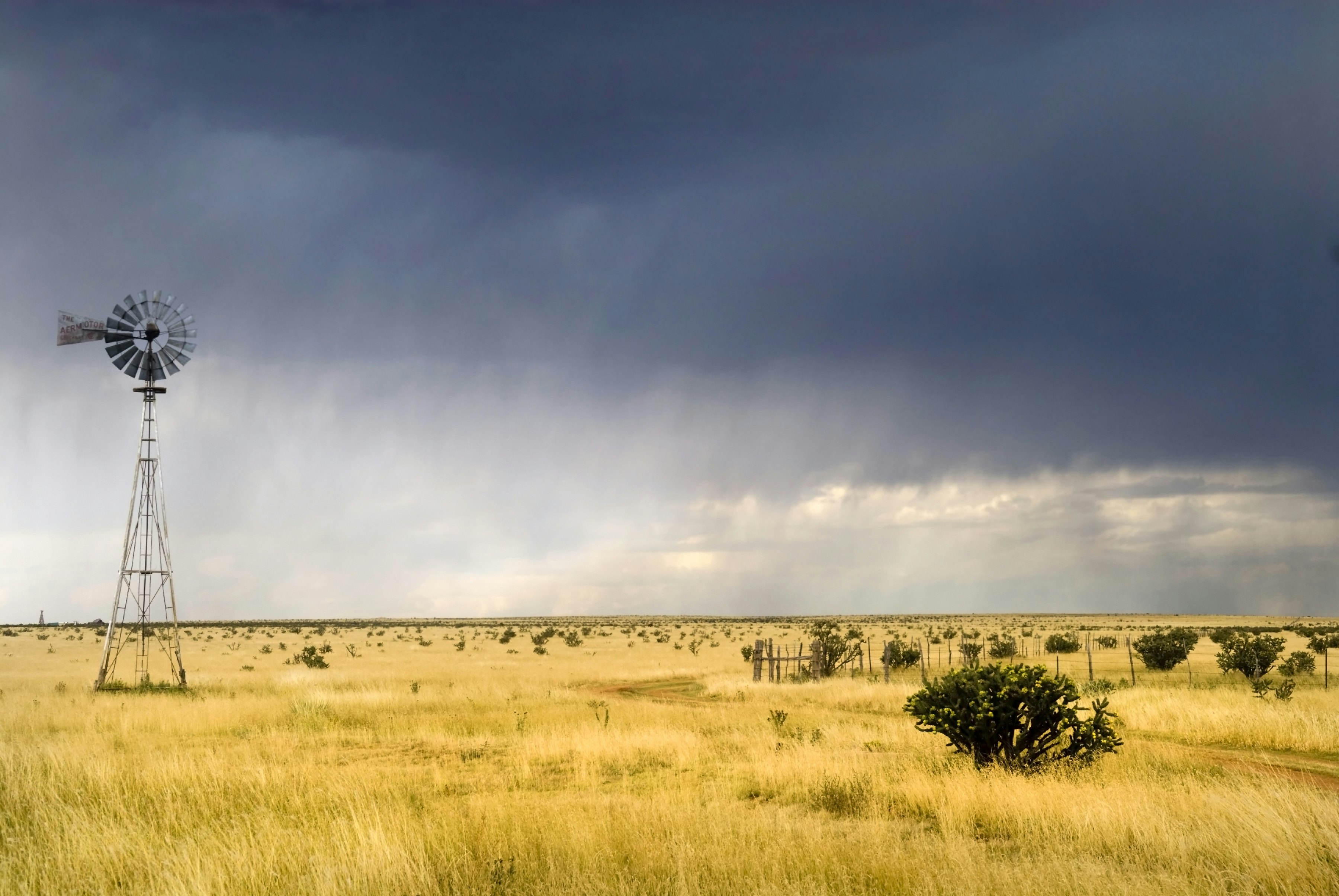
4. The core journey
Best for: The uncompromising but time-pressed
Time: 6 days
Get to the figurative and literal heart of Route 66 on an itinerary from St Louis to Flagstaff, Arizona, which takes in much of what defines the road. You may lose Illinois, the Mojave Desert and that first glimpse of the Pacific, but you’ll get to enjoy the heart of the Mother Road: the roadside attractions of Missouri, the innumerable experiences in Oklahoma, and the beauty and wide-open vistas of Texas, New Mexico and Arizona. Plus, unmissable Albuquerque.
5. Weekend discoveries
Best for: Short, Route 66–themed escapes
Time: 2.5 days
It’s not impossible to enjoy Route 66 in just a weekend. Cut out of work early on Friday and drive straight on Route 66 to a nearby destination where you’ll stay for two nights, maybe stopping once or twice on the way. On Saturday, you’ll explore nearby Mother Road sights; on Sunday, you’ll drive back, taking your time to do the road properly.
Four possible such mini–Route 66 itineraries include Chicago to Springfield, Illinois; Oklahoma City to Tulsa, Oklahoma; Albuquerque to Winslow, Arizona; and Los Angeles to Kingman, Arizona.
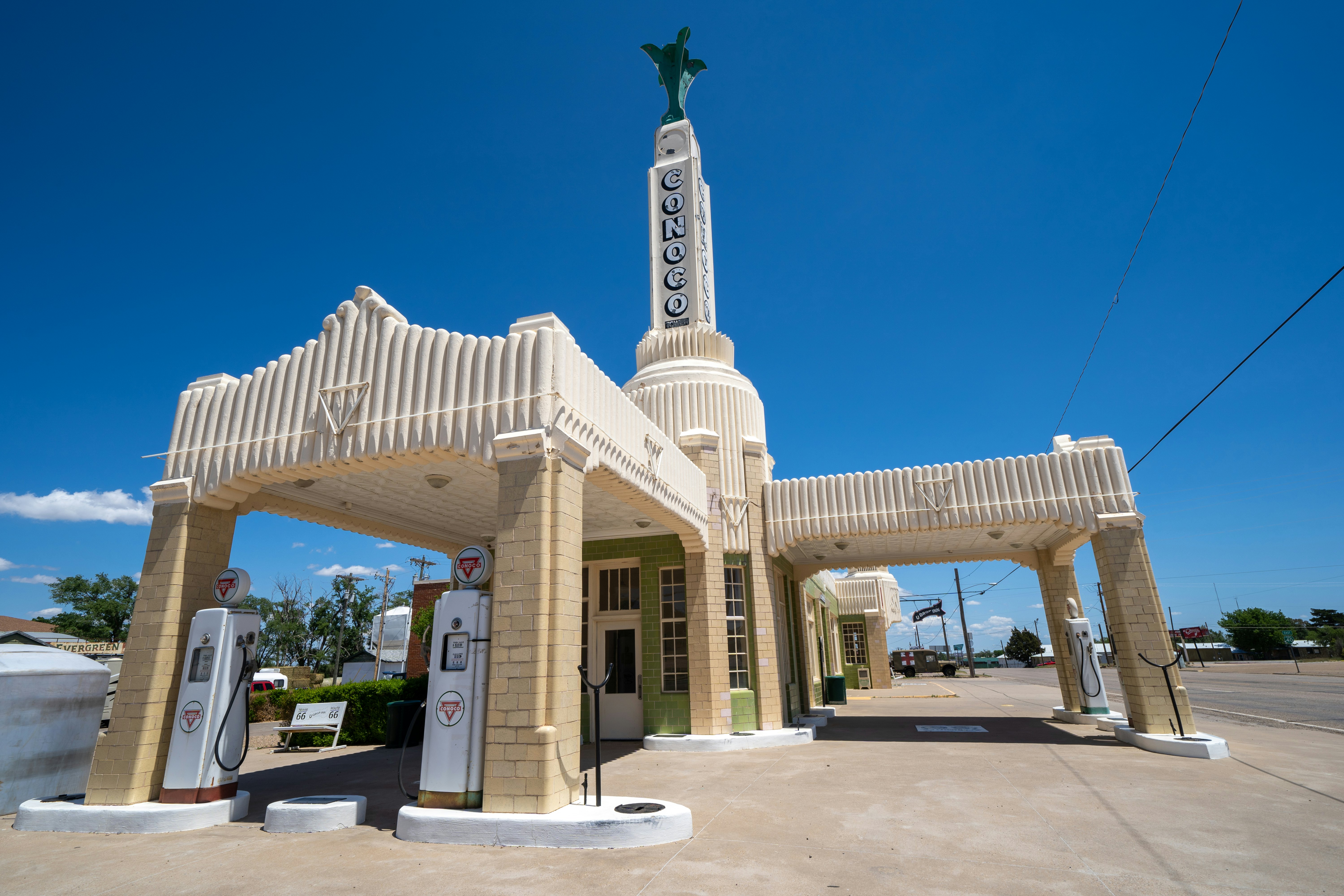
First-time tips for driving Route 66
Visa
Visitors from 42 nations, including the UK, Australia, New Zealand, Japan and many EU countries, don’t need visas to the USA for stays of under 90 days, though they must get approval from the Electronic System for Travel Authorization (ESTA). Visitors from Canada don’t need a visa or ESTA approval for stays of under 90 days. Visit the US State Department’s website for additional information.
Health insurance
Health-care costs in the USA are extremely high. All travelers are advised to carry a health insurance policy valid for their US travels. Without insurance, you will be billed the full cost of any care you receive – and costs can easily rise into the thousands, especially for emergency-room visits.
Phones, internet and wi-fi
Most non-US mobile phones work fine in the US, but roaming charges may be high. Check what your plan allows, especially for data as you’re likely to use mapping apps a lot on Route 66. For foreign visitors, we highly recommend getting an inexpensive eSIM with at least 5GB of data to stay connected. Free wi-fi is offered in motels, hotels, cafes and many public spots.
Other practical things to know
Route 66 crosses three time zones: Central (CT, GMT/UTC minus six hours); Mountain (MT, GMT/UTC minus seven hours); and Pacific (PT, GMT/UTC minus eight hours). Daylight saving time starts on the second Sunday in March and ends on the first Sunday in November. It’s not used everywhere – use your phone to determine local time.
You may be asked to show photo ID to buy or consume alcohol by law, even if it’s obvious you are well over the legal US drinking age of 21.
When it comes to dress in the USA, just about anything goes – especially along Route 66. Unless you’re planning nights out at stylish places in Chicago and LA, you can dress as casual as you like.
Most states in the US, including California and Illinois, are smoke-free in restaurants, bars and workplaces; parts of southern states such as Oklahoma and Texas are exceptions.
Marijuana legality varies widely by state. Small amounts for personal use are legal in California and Illinois, but are illegal in Oklahoma, Texas and elsewhere.
Where to stay along Route 66

Vintage motels
Motels and Route 66 have a symbiotic relationship going back decades. Built to serve auto travelers, hundreds once lined the route; today, a few survive. Some, such as the Wagon Wheel Motel in Cuba, Missouri, and the Blue Swallow Motel in Tucumcari, New Mexico, are Mother Road icons and beautifully restored. Many more motels can be found on the road in all of the eight states it covered.
Certain vintage motels on Route 66 are classics and must be booked in advance. Others with sagging eaves, busted neon signs and weedy parking lots barely hang on. In between are motels that value every guest. Look for recent reviews on social media and always ask to see a room before committing.
Chain hotels and campgrounds
Chain hotels cluster around interstate interchanges. Despite different brand names, modern hotels have similar designs that vary little from brand to brand. More lavish properties await in Chicago, St Louis, Tulsa, Oklahoma City, Albuquerque and LA. Campgrounds are found in and near state parks and national forests.
More to know about accommodations along Route 66
American motels and hotels offer wi-fi; only at the most expensive properties is this basic amenity not free.
Budget and midrange places feature “free” breakfasts – generally institutional in concept, often with under-ripe bananas and convenience foods heavy on salt and fat. (Seldom will they help you stray from the temptation of a full breakfast diner.)
Pools are not universal but are welcome after a day on the road in summer.
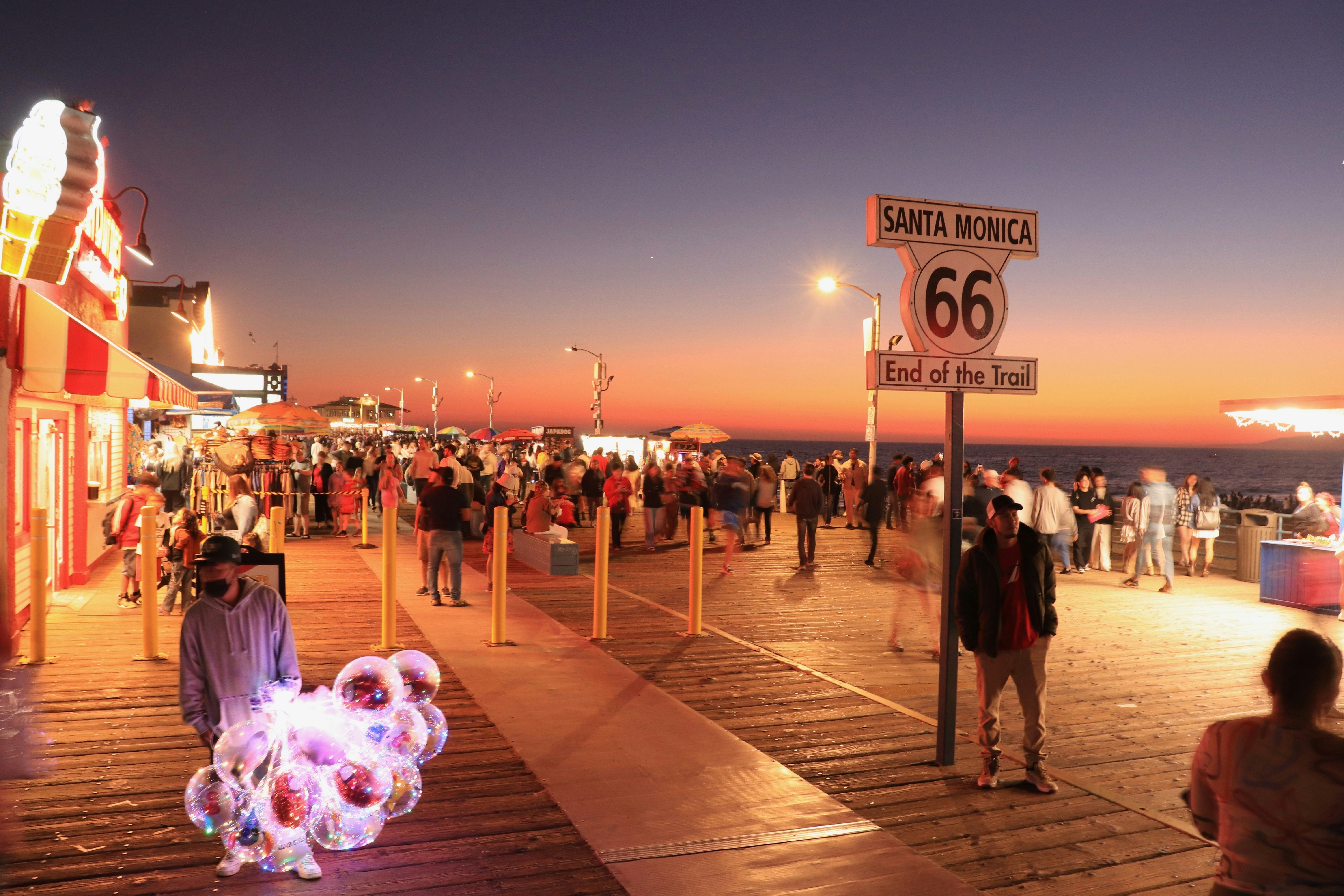
Budgeting for Route 66
A budget of $350 to $400 per day for two people on Route 66 will not leave you feeling like you’re scrimping. In Chicago and LA, you’ll likely need to budget a bit more for food and lodging – yet the remainder of the road (and the vast majority of the distance it covers) runs through mostly humble communities where residents tend to be on tight budgets themselves. Opportunities to splurge outside of large cities are few. With economizing, two people can do this road trip for well under $300 per day.
Daily costs along Route 66
Coffee and snacks: $20
Museum entry: $12
Souvenir: $20
Lunch at roadside diner: $30
Vintage motel room: $120
Dinner at local restaurant: $50
Gas per day: $60
Car rental per day: $60
Total per day for two adults: $372
Tipping
In the USA, tipping is not optional – it’s essential to how people in the service industries earn their living.
Bartenders: 15% to 20% per round, minimum per drink $1
Housekeeping: $2 to $5 per night, left by the TV or with the provided card
Restaurant servers: 20% on the total bill, unless a gratuity is already on the bill (try to leave cash, so the server is sure to get it)
Taxi drivers: 10% to 15%, rounded up to the next dollar
Budgeting tips for Route 66
Be sure to check prices on an indie motel’s website, as they may be lower than those on major booking sites.
Consider traveling in April, May, September or October for reduced prices and the best weather.
Don’t convert the cost of your transaction into your home currency at ATMs, or when making a purchase, as you’ll get hit with fees twice.
Don’t assume winter will be cheaper.
This article was adapted from Lonely Planet’s Journey Route 66 guidebook, published in September 2025.















